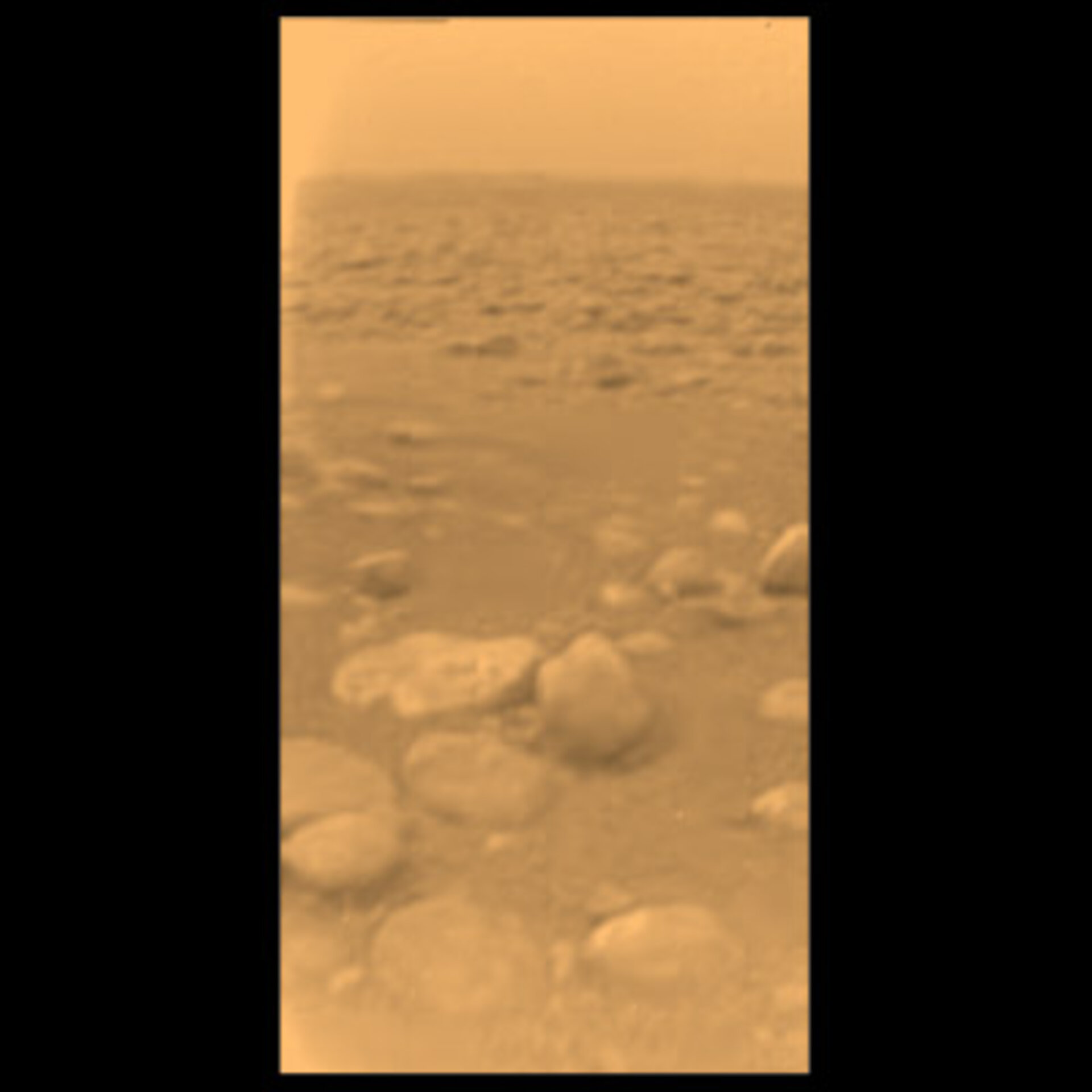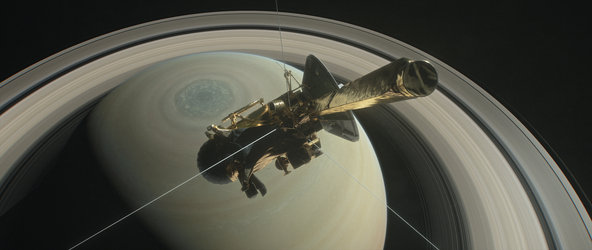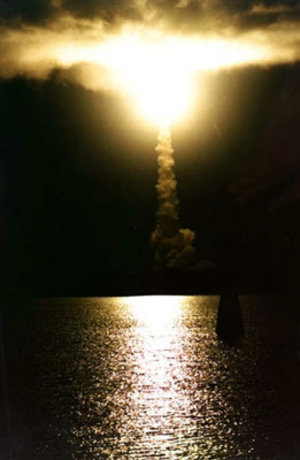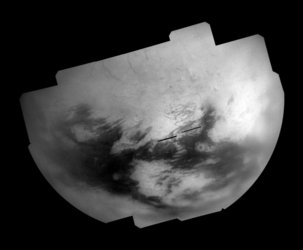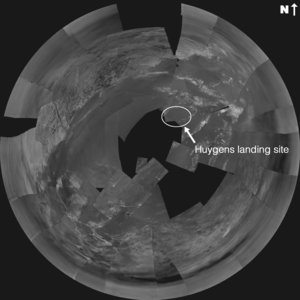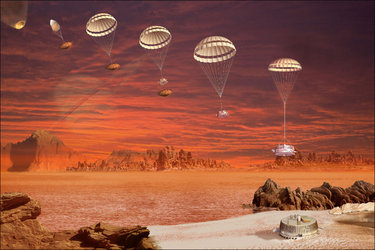Celebrating the fifth anniversary of Huygens’ Titan touchdown
Five years ago today, ESA’s Huygens probe descended to the surface of Titan, Saturn’s largest moon. Today planetary scientists from around the world have gathered in Barcelona to discuss the legacy of Huygens and to consider future Titan exploration missions.
At 13:34 CET on 14 January 2005, Huygens became the most distant manmade object to land on another world. During its descent and landing, it beamed back to the Cassini spacecraft around four hours’ worth of invaluable scientific data, revealing Titan to be a world with both striking similarities to and alien differences from Earth.

Huygens arrived at Titan following a seven-year voyage attached to the NASA/ESA/ASI Cassini spacecraft. It then spent 2 hours and 28 minutes descending by parachute through Titan’s atmosphere, blasted by winds of up to 430 km/h. Once it touched down, Huygens spent another 70 minutes transmitting more data before the Cassini spacecraft moved out of range. The Huygens signal then continued to be received for another 2 hours by a network of radio telescopes on Earth.
The Huygens measurements have provided planetary scientists with a rich library of measurements from which to extract information, in conjunction with the wealth of data acquired by Cassini in more than 60 Titan flybys to date. Huygens sampled the chemical constituents and the physical conditions of the atmosphere and surface. All of this can now be compared with laboratory work, 'analogue substances' and computer modelling to interpret the data fully. Analogue substances are created on Earth to mimic material found on Titan.
Titan has intrigued planetary scientists for decades. It is the only moon in the Solar System with a thick nitrogen atmosphere. Hidden beneath thick haze, its surface had never been seen before in such detail. Huygens’ pictures revealed a remarkably Earth-like landscape of hills, valleys and drainage channels.

The hills are made from ice, probably water ice although this remains a subject of debate, rendered hard as rock by the extreme cold. Huygens measured the surface temperature to be –179°C. Rain is highly likely but, instead of water, Titan rains methane and ethane. Although Huygens saw no seas of such exotic liquids, lakes of this concoction have now been confirmed at high latitudes. Huygens itself landed in a riverbed, which, although dry at the time of the landing, probably funnels the methane rain off the hills and onto the lower ground. Dark organic compounds created in the upper atmosphere also drift down to coat the moon’s surface and mix with ice grains to form sand-like material which settles in longitudinal dunes.
The discovery by Cassini of equatorial dune fields of this sandy stuff allowed Huygens’ landing site to be pinpointed because Huygens saw two dunes, which could be matched to the larger image.
Together, the six scientific instruments carried by Huygens provided the ‘ground truth’ which now forms the bedrock of all subsequent investigations into Saturn’s largest moon. For example, the Cassini spacecraft has five more flybys planned for this year.

“The Huygens mission was the most spectacular success, as shown by this conference and the fact that we are still extracting new information from the data. We will continue to use these data to understand more and more about Titan for many years to come, and transmit all that we know – and don’t know – to future Titan explorers,” says Jean-Pierre Lebreton, ESA Project Scientist for the Huygens mission.


